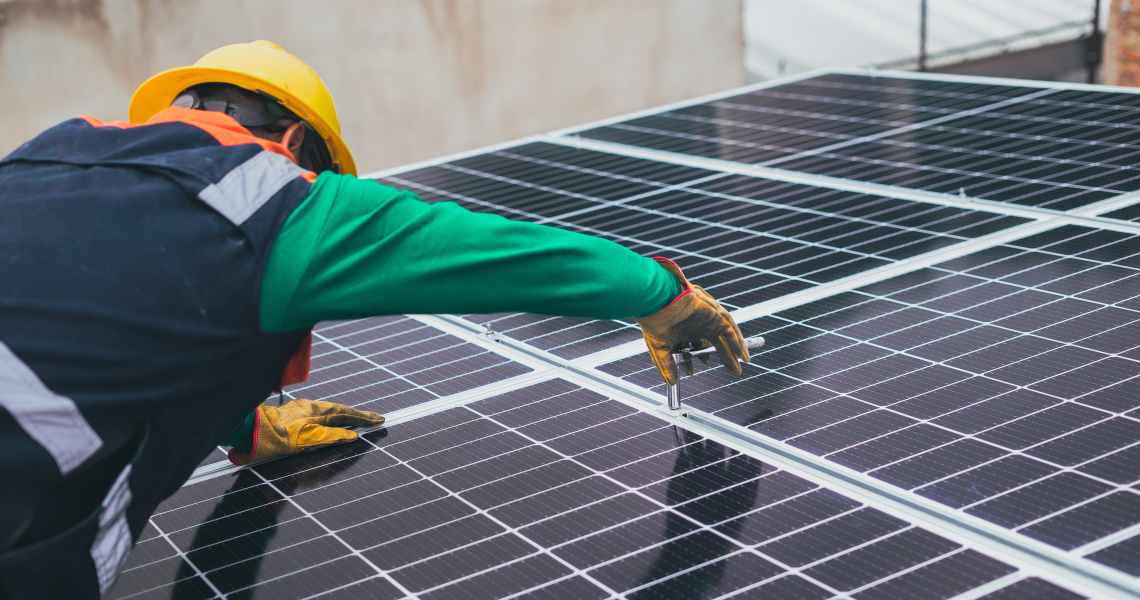As part of its company-wide sustainability goals, Tapestry, the parent company of fashion brands Coach, Kate Spade and Stuart Weitzman, has been making big moves to account for the carbon impact of its worldwide operations. Tapestry is among a growing movement of brands and large fashion companies including H&M that are transitioning to renewable energy to meet 2025 and 2030 sustainability goals.
On December 13, renewable energy provider Pivot Energy and Tapestry, Inc. announced that they are collaborating to initiate six community solar projects in Illinois. These projects aim to generate a total of 33 megawatts of solar energy over 15 years. Tapestry has pledged to buy the Impact Renewable Energy Credits, or RECs, from these projects for 15 years. The projects’ expected annual production is over 50,000 megawatt-hours, totaling approximately 750,000 megawatt-hours over the 15 years. The “megawatt” energy is about the speed of energy delivery, while the “megawatt-hour” rating is about the distance or duration of energy delivery.
RECs represent the environmental benefits of renewable energy generation, such as carbon reduction. These credits allow for these benefits to be traded and claimed by entities like Tapestry which aren’t directly producing renewable energy but want to support it or meet specific green energy goals.
Commitments to energy projects that can sustainably power businesses are key for brands looking to hit 2025 sustainability and carbon emission goals. On an April episode of the Glossy podcast, Everlane CEO Andrea O’Donnell said many brands are not on track to hit their goals and should be doing more to address their impact. The non-profit NGO Wrap released its Textiles 2030 initiative in November stating that participating brands like Asos, New Look and Primark only reduced their carbon use by 2%. Solutions like the Pivot REC’s allow for brands to power homes as well as account for their carbon use.
“We’ve committed to 100% renewable energy in our own operations [by 2025],” said Logan Duran, vp of ESG and sustainability at Tapestry. “So this is the opportunity for us to get our own house in order as we continually engage with our supply chain where we know the majority of our target impact sets.” In October, the company partnered with the non-profit Fashion Pact to account for its European operations’ emissions, and it plans to establish an Asian market renewables partner before the 2025 deadline.
“This is part of our larger climate strategy,” said Duran. In 2021, the company committed to setting Science Based Targets. Now, it’s waiting for validation on its sustainable goals from the Science Based Targets Initiative across its scope one, two and three goals ahead of its own goals deadline. The Science Based Targets Initiative is a corporate climate action NGO that works in partnership with non-profit Carbon Disclosure Project, the United Nations Global Compact and the World Resources Institute (WRI), among others. It develops scientific standards and validates them according to the standards. Likewise, other brands will have to act fast to avoid going off-track and failing to meet their 2025 goals.
Tapestry knows that the bulk of its emissions sit in manufacturing and scope three, or emissions that are not directly created by the company, and it’s addressing this through its supply chain. “By working with the World Wildlife Fund two years ago, we announced a $3 million, 4-year grant focused on building systems around deforestation and conversion-free supply chains,” said Duran. “Within our Coach brand, we’ve also introduced regenerative agriculture and hides from regenerative agriculture.” Coach is the largest brand in the Tapestry portfolio, with $4.96 billion in annual revenue. Tapestry added Versace, Jimmy Choo and Michael Kors to its brand portfolio after a deal was announced in August to acquire Capri Holdings. The deal is on track to be finalized by the end of 2024.
In addition, Tapestry is committed to guidelines set by the responsible leather organization Leather Working Group and is only sourcing from gold- and silver-rated tanneries. Currently, 96% of its leather is coming from gold- and silver-rated tanneries. It’s also taking advantage of leather production innovation and opportunities to design for durability. “In March, we invested in Gen Phoenix, a supplier that’s cutting scraps and shavings from the tanning process and recycling that material, which creates the opportunity for true circularity,” said Duran. Launched this month on Coach’s Coachtopia site, Tapestry is showcasing a video series titled “The Road to Circularity,” which was filmed inside its factories to show its circularity progress.
To reach 2025 goals, support throughout the company is needed, Duran said. “C-suite support is absolutely critical to the success of any program. … My department reports to our chief supply chain officer. But we’ve also set up the governance within our organization where we are regularly reporting on the progress of our work to the executive committee, as well as to the Board of Directors. There is top-down, as well as bottom-up support for all this work.”
Pivot, the energy company that Tapestry is working with on the Illinois renewable energy project, has doubled in headcount over the last 18 months because of growing interest from the apparel industry in energy credits.
“The demand [from fashion companies] is definitely there, but none has gone as far as Tapestry,” said Josh Levy, director of business development at Pivot. “The best thing that brands can do for renewable energy commitments is to start taking action now by working with these steps of procurement for renewable energy.”
Both Tapestry and Pivot also plan to invest $2,000 per megawatt constructed, totaling $66,000 before 2025, in local community organizations like charity Bright Futures. These investments will promote equitable workforce development in the renewable energy sector.
Pivot Energy estimates that Tapestry’s community solar projects will produce 51,760 megawatt-hours of clean electricity annually, or enough to power over 6,000 average homes in Illinois each year.
The solar projects are expected to become operational and start providing clean energy by early 2025.




